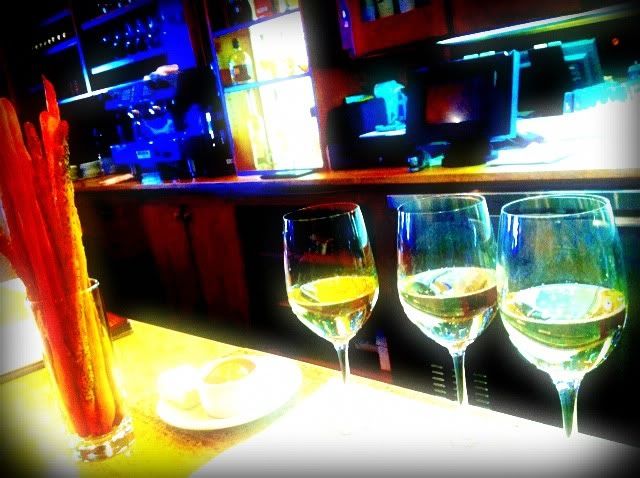The wines of Spain's Rioja region are varied and always a delight. From crisp, young whites to fresh rosados to bright and cheery young reds and those with some age and oak influence, the wines of Rioja never fail to impress while showing off their terroir.
The Rioja region lies between mountain ranges in the north-central part of Spain and is separated into three main sub-regions, Rioja Alta, Rioja Baja and Rioja Alavesa. Tempranillo is the main red grape, although you will often see Graciano, Garnacha (Grenache) and Mazuelo. For white wines, Viura is popular, with Malvasia playing a supporting role.
Tempranillo wines are defined four different ways. Cosecha are young wines, one or two years old. Crianza wines are in at least their third year, with a minimum of one year in oak. Reserva wines are aged a minimum of three years, two for whites, with at least one in oak. Gran Reserva refers to selected wines from great vintages. They have spent at least two years in oak and three in the bottle. Whites are aged at least four years. It may sound a little complicated, but the system defines the wines of Rioja well.
Not only do Rioja wines have a generally high level of quality, but they deliver it at very affordable prices. Most of the wines I will mention here are in the $10 to $20 range. A few went as high as $30, and some are under $10.
Here are some of the standouts I tasted at a Rioja tasting sponsored by
Vibrant Rioja at
Fleming's Steakhouse in Beverly Hills on May 7th, 2013.
It's not a Rioja tasting without a stop at the Lopez de Heredia table. WineWise had these, and the whites are simply outstanding. The
Viña Gravonia Crianza Blanco 2003 is 100% Viura and has four years in the barrel and four in the bottle. The
Viña Tondonia Blanco Reserva 1998 has six years in the barrel and is 90% Viura. These well-aged whites are really unbelievable.
Ole Imports, distributed by Angeles Wine, had two fresh wines by Cortijo. The
2012 Rosado is all Tempranillo with brilliant acidity while the
2011 Tinto has 20% Garnacha thrown in, with only three months in oak. Field blend fans should take note of the
El Brozal 2010 - roughly 80% Tempranillo, 10% Graciano and 10% Garnacha, grown together in the 1938 vineyard and co-fermented. There is an intriguing, savory nose and fabulous acidity. The
VSL Graciano 2010 - the only 100% Graciano I saw at the event - is savory. It is fermented in concrete and spends only three months in oak.
I found Undiscovered Wines in the far corner of the room. Rodriguez Sanzo's
Lacrimus 5 is all unoaked Tempranillo, fresh and juicy, while their
Lacrimus Rex blends Garnacha and Graciano for a dark, vibrant red that was one of my favorites. The
Zinio Garnacha is lovely - a bit more savory than I expected - and the fruity, funky nose of the
Heredad Garblo Crianza mixes four red grapes - Tempranillo, Garnacha, Mazuelo and Graciano.
Importer CIV USA had some excellent wines from Conde de Valdemar. Their
Sierra Cantabria Blanco 2011 is 100% Viura, aged three to five months in French oak. It has a distinctive floral aspect on both the nose and palate. Their
2011 Rosado is a pink-tinted blend of Tempranillo and Garnacha, from vines pushing 70 years old. Great acidity is the highlight, with an herbal strand and a nice touch of oak. Their
Crianza 2008 has an exceptional nice oak effect and a savory side that dominates.
Dinastia Vivanco Blanco 2012 is a mix of Viura, Malvasia and White Tempranillo. The pourer told me, with a laugh, that the last grape is nothing like White Zinfandel. It is a natural mutation of the
red Tempranillo grape and was not discovered until 1988. This wine displays a huge streak of citrus. Their
Rosado 2012 is Tempranillo and Garnacha, showing a garden of strawberry. The
Vivianco Crianza 2008 has lively, young fruit while their
Vivianco Reserva 2005 is a mature blend of Tempranillo and Garnacha.
From Fine Estates of Spain, Jorge Ordonez Portfolio, comes a nearly perfect
Sierra Cantabria Rosado 2012, with strawberry, cherry and fantastic acidity in the Tampranillo/Garnacha/Viura blend. They also poured the
Finca Allende Blanco 2009, a 90% Viura/10% Malvasia mix. The nutty, floral nose anticipates a great, savory palate.
Folio Wine had the unbelievably refreshing Palacio Remondo
Placet Valtomelloso 2011. This unoaked Viura wine has fruit all over the nose and an herbal touch on the palate. The Palacio Remondo
La Montessa 2009 is a Garnacha/Tempranillo blend - heavy on the Garnacha - which spends 18 months in oak, yet is still light, bright and refreshing. The
Artadi Vinas de Gain 2009 is a savory 100% Tempranillo wine.
Frederick Wildman &Co. Splashed a nice white, the
El Coto Blanco 2012 - 100% Viura aged in steel with a sweet, floral nose. Also unoaked is the
El Coto Rosado 2012, all Tempranillo with lovey strawberry and herbal flavors. The fruit-forward red,
El Coto de Imaz Reserva 2005, makes a great everyday wine. The
Baron de Lay Gran Reserva 2004 has dusty fruit and great tannic structure.
Grape Expectations Imports poured the Bodegas Lan D-12 2009, a light and delicious Tempranillo.
Vinos Libres Wine Merchants splashed a taste of the Luis Alegre Koden Semi-Crianza 2010. Not an official designation, the importer calls it semi-Crianza due to its six months in oak. It is an elegant and savory Tempranillo.
Follow Randy Fuller on Twitter






